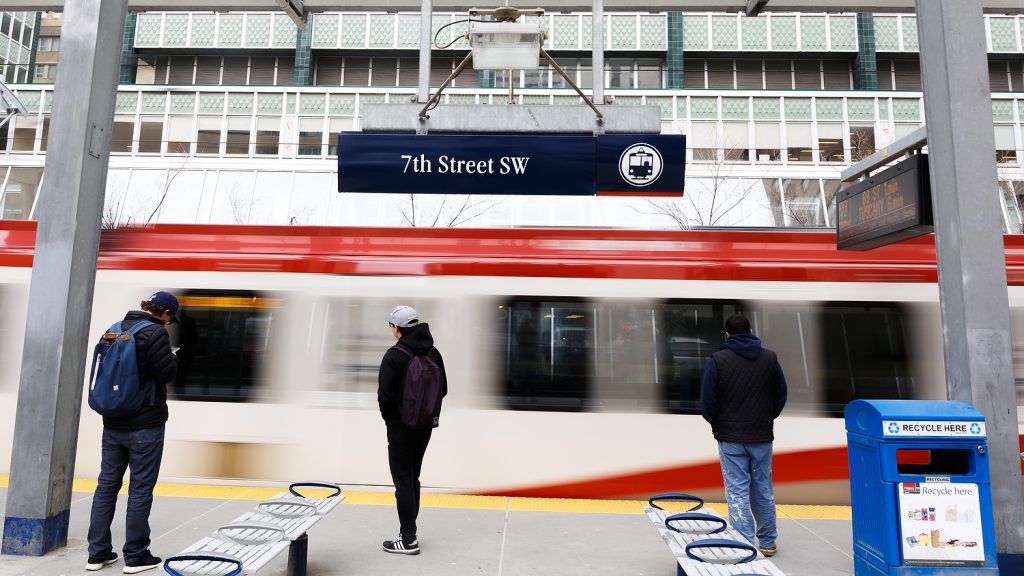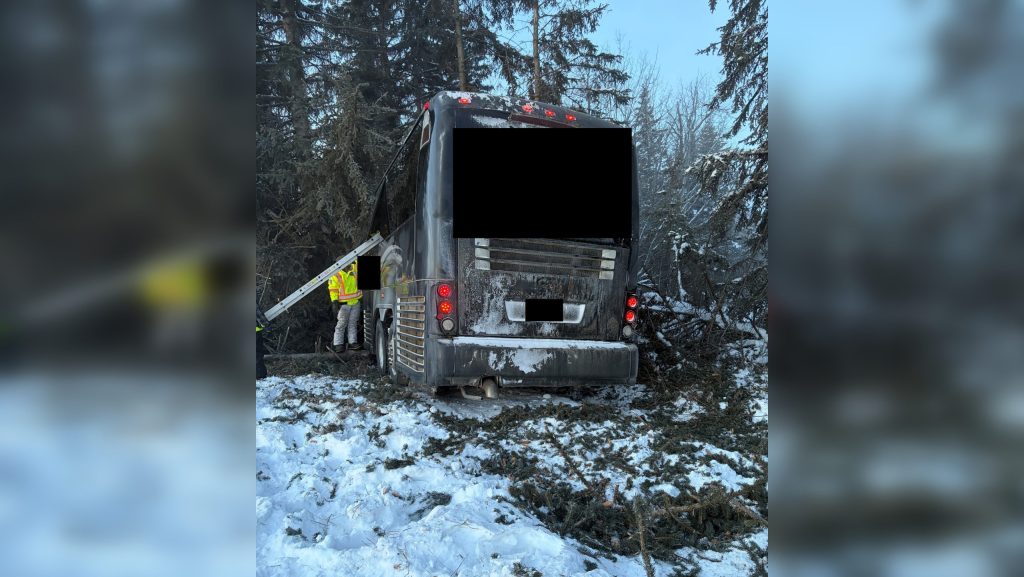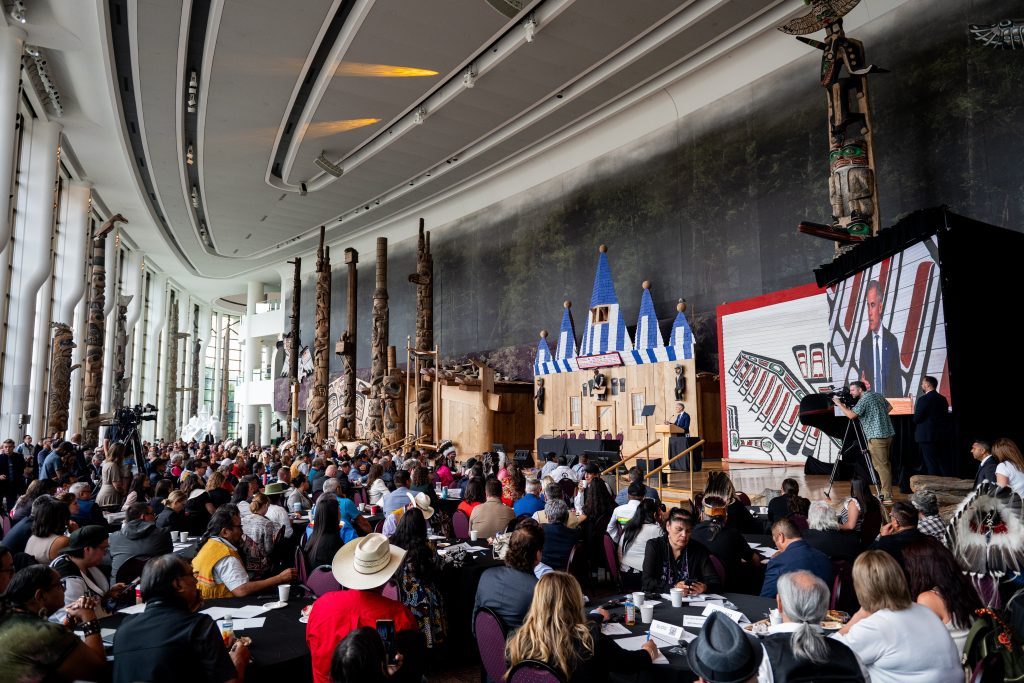Homeless Calgarians flocking to public transit due to lack of safe shelter spaces: report

Posted May 28, 2024 9:39 am.
Last Updated May 29, 2024 11:54 am.
Opioid-poisoning deaths, calls to police for mental health concerns, and reports of encampments are all up substantially in Calgary and are spilling onto public transit.
A new report by Vibrant Communities Calgary breaks down the issues, saying it largely comes down to one core problem: those struggling have no place to go.
The report released Tuesday, titled ‘No Place to Go,’ explores the connection between mental health, substance use, and homelessness on public transit.
Some of those spoken to for the report were Calgary police officers, Calgary Transit peace officers, outreach workers from the Mustard Seed, the Calgary Drop-In Centre, and Alpha House Society, as well as individuals currently experiencing homelessness.
Calls for service, drug poisonings up
Calgary police are receiving more calls related to social disorder in LRT stations (identified by report authors as the physical signs or behaviours that negatively influence the utility, enjoyment, sense of security, and social interactions amongst those who are using transit), with a sharp increase seen in 2021 and 2022.
Last year, calls for service returned to pre-pandemic levels.
From 2018 to 2023, calls to the Calgary Police Service (CPS) for mental health concerns increased by 38 per cent.
Over a similar time period (2016-2023), acute substance deaths were up 186 per cent.
Every year, fentanyl is involed in two-thirds of these deaths, followed by methamphetamine at 49 per cent and cocaine at 31 per cent.
Municipal EMS responses to opioid events also jumped 68 per cent from 2017 to 2023.
The report says during this time, public spaces became the primary location of unintentional opioid-poisoning deaths, with 53 per cent of all deaths happening in public.
Transit peace officers and members of the HELP Team (formerly the DOAP Team) say people feel safer doing drugs on transit because of the CCTV system and help phones — if they overdose on transit, they feel they have a better chance at survival.
Reports of encampments made to 311 have also increased by 410 per cent in the last five years.
Hearing from shelter users
Report researchers held hour-long focus groups at the Calgary Drop-In Centre and the Mustard Seed in November 2023, where they talked with 16 participants who shared what they were going through in their everyday life.
“I ride the rails. I’d ride from one end of transit to the other,” one person told researchers.
Those experiencing homelessness seem to be in agreement that there are limited options of places to go during the daytime, pushing people to transit to shelter from weather or pass the time.
One participate noted, “We’re not allowed into the Mustard Seed shelter until 4 p.m. Mondays through Fridays. Saturdays and Sundays it’s open all day — but you can’t come and go as you please. So there are lineups. Sometimes we have to kill time, and it might be raining.”
At that same focus group, all participants agreed that if there were more places to go during the day, they would have less reason to spend time hanging out on trains or at transit stations.
Others said they will often go to malls, particularly food courts, fast food restaurants, and libraries to pass the time during the day, to recharge their phones, or get access to Wi-Fi.
The Mustard Seed Warming Centre, the Kerby Centre. The Alex, and the Women’s Centre on Edmonton Trail were also noted by participants as locations they like to go during this time, though the operating hours are not widespread.
Those experiencing homelessness expressed the desire to have more daytime options including activities like cards or a recreation centre.
Through those conversations, researchers were able to identify Chinook Station, the Free Fare Zone and City Hall/Bow Valley College Station, Marlborough Mall Station, Sunalta Station, and Victoria Park Station as areas particularly prone to social disorder.
Police and transit officer perspective
Ten Calgary police officers, nine transit peace officers, and two Alpha House staff members were also interviewed as part of the report.
Police officers and transit officers told researchers most encounters with people experiencing homelessness on transit involved conversations related to littering, loitering, fare evasion, and urinating or defecating in transit stations. Although reported as social disorder, these instances are not typically considered criminal in nature.
Participants in this focus group agree that homeless shelters are inadequate and unsafe, with one saying “people don’t want to go to the [shelters] and their preferred shelter may be full, which is why they go to transit stations.”
According to one transit peace officer, officers have learned that people don’t want to go to the shelters for worry their belongings might get stolen, a fear of catching a disease, or a fear for their own safety
Also of concern among those working with the unhoused population are the limited treatment and harm reduction options.
Researchers explain that officers cited the overdose crisis and a lack of available service options as contributing factors to social disorder on transit.
The increase in frequency of overdoses, seeing people experience worsening substance abuse, mental health crises, and the lack of services directed at addressing the opioid crisis is also taking a toll on responders.
“When I started five years ago, it was like ‘An overdose, like Oh my God.’ You’d get almost panicky,” one person said. “Now, you barely, barely even react because you’re so desensitized to it, it just happens all the time.”
One police officer told researchers the amount of detox facilities and beds in the city needs to quadruple and intake needs to be open at all times of day.
Transit and police officers also told researchers that people with mental health and addictions challenges aren’t receiving adequate care from hospitals.
One transit peace officer said hospital staff will refuse to see people if they are intoxicated.
“The frustrating part is we take [an individual] to the hospital to be seen by a doctor. Well, the doctor looks at [the physical ailment], [and says] it’s brought on by drugs. Sorry — kicks him out — can’t really help them,” they said.
Participants also highlighted limited options for respite and outpatient support for those suffering from mental health challenges.
Officers on both fronts say ticketing on transit lacks effectiveness, describing issuing tickets for drug use or loitering as a revolving door.
“You hand them a ticket, you do an arrest interval, they’ll literally crumple it up and throw it away like ‘OK, I’ll get another failure to attend,'” one transit peace officer said.
Challenges of capacity and lack of community-wide coordination among outreach teams is also presenting problems.
Researchers say some of the officers interviewed believe outreach teams are under-resourced and outreach hours need to be extended.
Officers say they also have limited referral options.
“People think there’s a social net that catches people. It’s not a net. It’s a tennis racket with no strings. If you can grab onto the edges, you’re OK. But most people don’t,” a police officer said.
Recommendations
Authors of the report have made five recommendations to deal with the issues currently faced by the City of Calgary.
They are asking the city to invest in more emergency shelter options, create more treatment and harm reduction options, create more medical respite options, coordinate street research, and invest in more housing.
Province says issues aren’t unique to Calgary
In a statement to CityNews, the Province of Alberta says the conclusions drawn by the Vibrant Communities Calgary report are “inaccurate” and “do not reflect the reality of services provided in Calgary.”
The Ministry of Seniors, Community, and Social Services claims Alberta shelters are already fully-funded for around the clock supports, including daytime service.
“The province is investing nearly $84 million in Calgary to ensure over 2,000 shelter spaces are open 24/7 and community groups are ready to support those experiencing homelessness,” ministry spokesperson Alexandru Cioban said. “To build on these investments and expand on the great results we’ve seen in Edmonton, our government will also be opening a Navigation and Support Centre in Calgary.”
The Ministry of Mental Health and Addictions adds that every jurisdiction across North America is facing an addiction crisis, and the problem isn’t unique to Calgary, or Alberta.
Furthermore, it claims recent data shows EMS responses are at their lowest levels in over a year and overdose fatalities in Calgary have went down 52 per cent since peaking last year.
“We are going to continue taking a compassionate approach by building a system focused on treatment and recovery,” spokesperson Hunter Baril said. “In the past year, we have opened doors to two world-class treatment centres in Red Deer and Lethbridge. We are building nine more of these facilities. One will open within the City of Calgary later this year and two more will be built in close proximity on the Siksika Nation and Tsuut’ina Nation. Of the more than 10,000 new treatment spaces since 2019, over 4,600 of these are within Calgary.”
Baril adds immediate, same-day access to life-saving medication is available through the Virtual Opioid Dependency Program.
“This is what Albertans expect: a government that supports recovery, not the ongoing facilitation of addiction with failed policies adopted by other jurisdictions,” he said.








